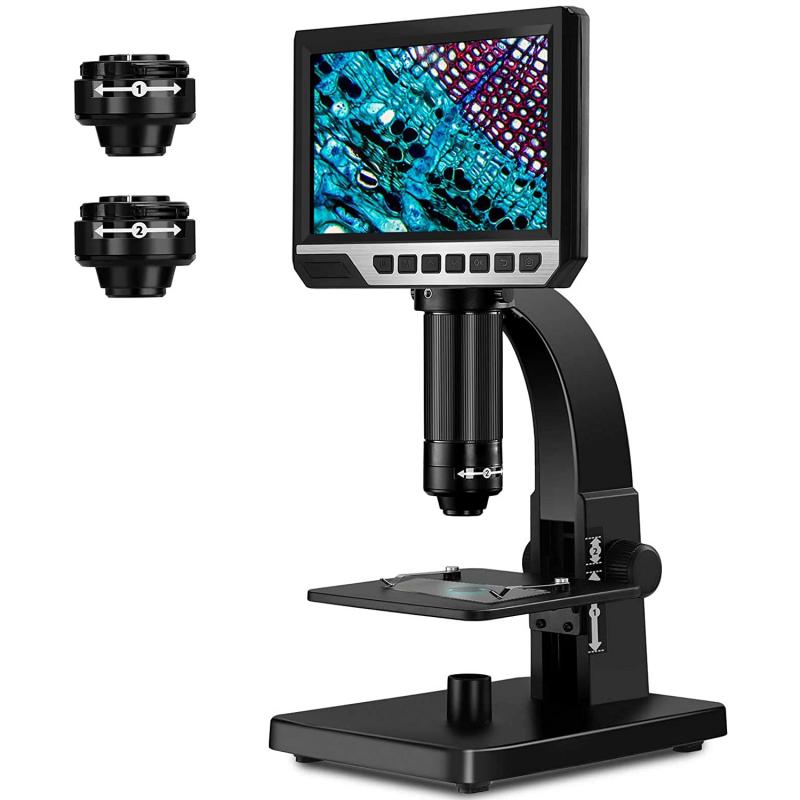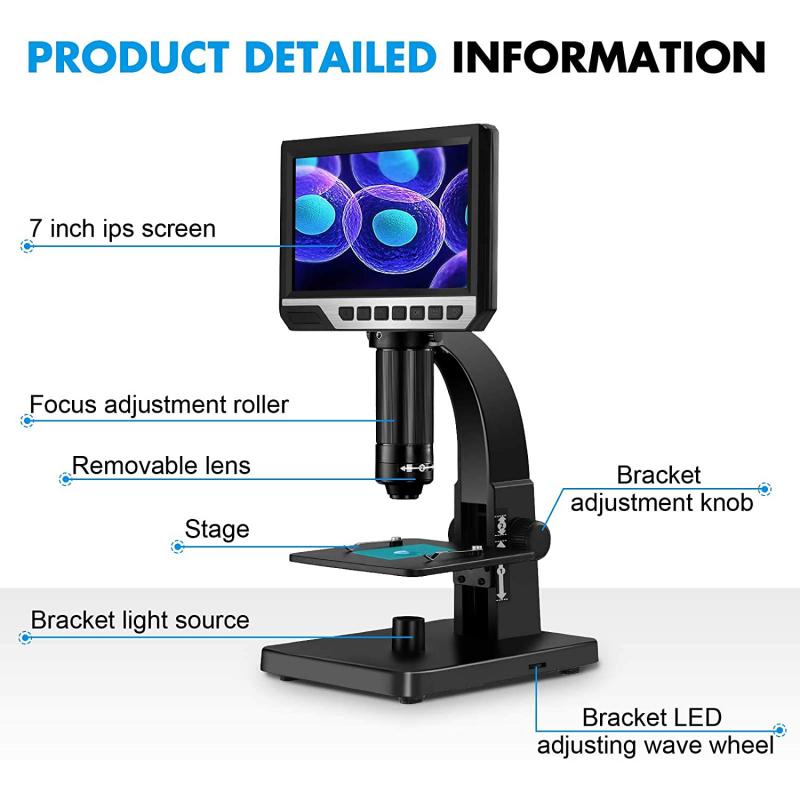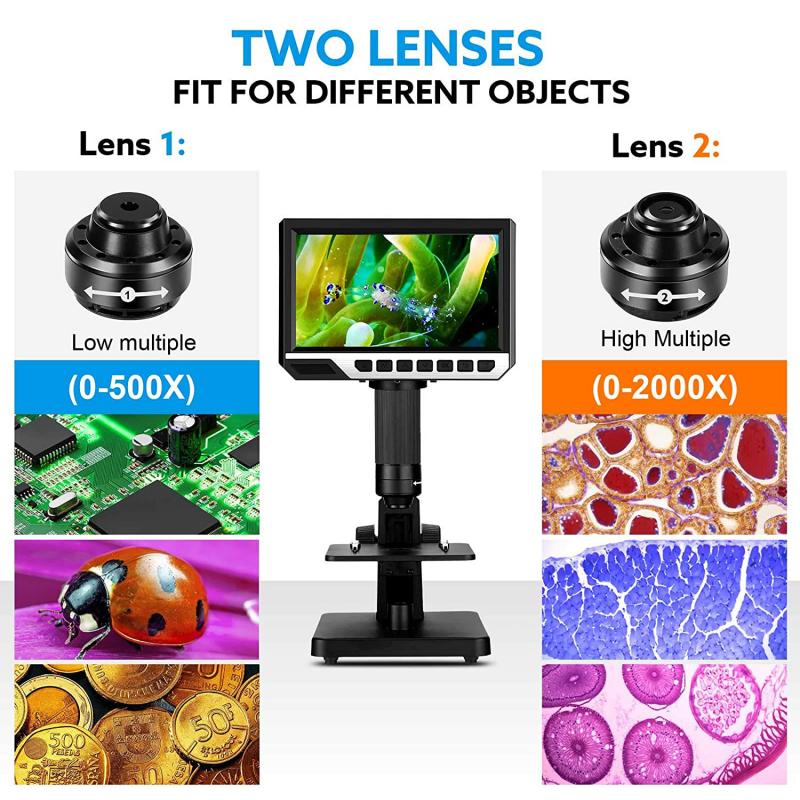When Was The Microscope Developed ?
The microscope was developed in the late 16th century.
1、 Invention of the compound microscope in the late 16th century.
The compound microscope, a revolutionary scientific instrument that allowed scientists to observe and study microscopic organisms and structures, was developed in the late 16th century. The exact date and inventor of the microscope are still subjects of debate among historians and scientists. However, it is widely accepted that the compound microscope was first developed during this time period.
One of the earliest recorded microscopes was created by Dutch spectacle makers, Zacharias Janssen and his father Hans, around the year 1590. Their microscope consisted of a convex objective lens and a concave eyepiece lens, which allowed for magnification of small objects. This invention marked a significant advancement in the field of microscopy and opened up new possibilities for scientific exploration.
Another notable figure in the development of the microscope is the Dutch scientist Antonie van Leeuwenhoek. In the late 17th century, Leeuwenhoek refined the design of the microscope and made significant improvements in its magnification capabilities. He was able to achieve magnifications of up to 270 times, allowing him to observe and document a wide range of microscopic organisms, including bacteria and protozoa.
It is important to note that while the compound microscope was developed in the late 16th century, the concept of magnification and lenses had been explored by ancient civilizations such as the Egyptians and Romans. However, it was the advancements made during the late 16th century that laid the foundation for modern microscopy.
In recent years, there have been debates regarding the exact origins of the microscope, with some suggesting that earlier versions may have existed. However, the general consensus among historians and scientists is that the compound microscope was developed in the late 16th century, with further advancements made in the following centuries.
The development of the microscope revolutionized the field of biology and allowed scientists to explore the intricate world of the microscopic. It paved the way for groundbreaking discoveries and advancements in various scientific disciplines, ultimately shaping our understanding of the natural world.

2、 Development of the electron microscope in the 1930s.
The microscope, a revolutionary tool that has allowed scientists to explore the microscopic world, has a long and fascinating history. The development of the microscope can be traced back to the late 16th century, with the invention of the compound microscope by Dutch scientist Zacharias Janssen. However, it wasn't until the 1930s that the electron microscope, a significant advancement in microscopy, was developed.
The electron microscope was a game-changer in the field of microscopy as it utilized a beam of electrons instead of light to magnify objects. This breakthrough allowed scientists to observe structures at a much higher resolution than was previously possible with traditional light microscopes. The development of the electron microscope in the 1930s marked a turning point in scientific research, enabling scientists to delve deeper into the world of cells, molecules, and even atoms.
The first practical electron microscope was built by German physicist Ernst Ruska in 1931. Ruska's invention utilized magnetic lenses to focus the electron beam and produced images with a resolution of about 50 nanometers. This was a significant improvement over the resolution of light microscopes, which were limited to around 200 nanometers.
Since its development, the electron microscope has undergone numerous advancements and refinements. Modern electron microscopes can achieve resolutions as high as 0.05 nanometers, allowing scientists to observe the finest details of biological and inorganic specimens. Additionally, techniques such as scanning electron microscopy (SEM) and transmission electron microscopy (TEM) have been developed, further expanding the capabilities of electron microscopy.
In recent years, there have been further advancements in electron microscopy, such as the development of cryo-electron microscopy (cryo-EM). Cryo-EM allows scientists to study biological samples in their native, frozen state, providing unprecedented insights into the structure and function of biomolecules. This technique has revolutionized the field of structural biology and has been instrumental in the development of new drugs and therapies.
In conclusion, the electron microscope was developed in the 1930s and has since undergone significant advancements. It has become an indispensable tool in scientific research, enabling scientists to explore the microscopic world with unprecedented detail and clarity. The latest advancements, such as cryo-EM, continue to push the boundaries of what is possible with electron microscopy, opening up new avenues of scientific discovery.

3、 Advancements in microscopy techniques and resolution in the 20th century.
Advancements in microscopy techniques and resolution in the 20th century have revolutionized the field of biology and allowed scientists to explore the microscopic world in unprecedented detail. The development of the microscope itself, however, dates back much further.
The first microscope was developed in the late 16th century by Dutch scientist Zacharias Janssen and his father Hans. This early microscope, known as the compound microscope, consisted of a convex objective lens and a concave eyepiece lens. It allowed for magnification of up to 9 times, enabling the observation of small objects and organisms.
Over the next few centuries, various improvements were made to the microscope, including the addition of a condenser lens to improve illumination and the development of the achromatic lens, which reduced chromatic aberration. These advancements gradually increased the resolution and clarity of microscopic images.
However, it was in the 20th century that significant breakthroughs in microscopy techniques occurred. One of the most notable advancements was the development of electron microscopy. In 1931, German physicist Ernst Ruska built the first electron microscope, which used a beam of electrons instead of light to magnify objects. This allowed for much higher resolution and the ability to visualize structures at the nanoscale.
In the following decades, further improvements were made to electron microscopy, such as the introduction of transmission electron microscopy (TEM) and scanning electron microscopy (SEM). These techniques enabled scientists to study the ultrastructure of cells and tissues in great detail, revealing intricate features that were previously invisible.
In recent years, advancements in microscopy have continued at a rapid pace. Super-resolution microscopy techniques, such as stimulated emission depletion (STED) microscopy and single-molecule localization microscopy (SMLM), have pushed the limits of resolution even further. These techniques allow for the visualization of structures at the molecular level, providing insights into cellular processes and interactions that were previously inaccessible.
In conclusion, while the development of the microscope itself dates back to the 16th century, advancements in microscopy techniques and resolution in the 20th century have significantly enhanced our ability to observe and understand the microscopic world. The latest advancements in microscopy continue to push the boundaries of what is possible, opening up new avenues of research and discovery in the field of biology.

4、 Introduction of scanning probe microscopy in the 1980s.
The microscope, a revolutionary tool that has transformed our understanding of the microscopic world, was developed in the late 16th century. The exact date of its invention is a matter of debate, but it is widely attributed to the Dutch scientist Antonie van Leeuwenhoek. In the 1670s, Leeuwenhoek crafted a simple microscope with a single lens, which he used to observe and document various microorganisms for the first time.
Fast forward to the 1980s, when a groundbreaking advancement in microscopy occurred with the introduction of scanning probe microscopy (SPM). SPM is a family of techniques that allows scientists to image and manipulate matter at the atomic and molecular scale. The development of SPM was a significant milestone in microscopy, as it provided a new level of resolution and precision.
One of the most notable techniques within SPM is the scanning tunneling microscope (STM), which was invented by Gerd Binnig and Heinrich Rohrer in 1981. The STM uses a sharp probe to scan the surface of a sample, measuring the flow of electrons between the probe and the sample. This information is then used to create a detailed image of the surface topography at the atomic level.
Another important technique that emerged in the 1980s is atomic force microscopy (AFM), which was developed by Calvin Quate, Gerd Binnig, and Christoph Gerber. AFM operates by scanning a sample with a tiny cantilevered probe, which interacts with the surface forces of the sample. By measuring the deflection of the cantilever, scientists can create high-resolution images of the sample's surface.
Since their introduction, scanning probe microscopy techniques have revolutionized various fields of science, including materials science, nanotechnology, and biology. They have allowed scientists to explore and manipulate matter at unprecedented levels of detail, opening up new avenues for research and technological advancements.
In recent years, there have been further advancements in microscopy, such as the development of super-resolution microscopy techniques. These techniques, including stimulated emission depletion (STED) microscopy and single-molecule localization microscopy (SMLM), have pushed the boundaries of resolution even further, enabling scientists to visualize structures and processes at the nanoscale.
In conclusion, the microscope was developed in the late 16th century, but the introduction of scanning probe microscopy in the 1980s marked a significant milestone in the field. Since then, microscopy techniques have continued to evolve, providing scientists with increasingly powerful tools to explore the microscopic world.
































There are no comments for this blog.